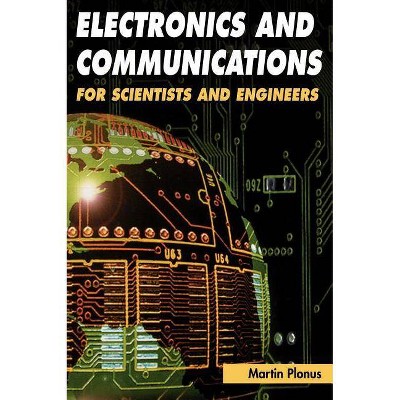Introduction to Mathematical Methods for Environmental Engineers and Scientists - by Charles Prochaska & Louis Theodore (Hardcover)

Similar Products
Products of same category from the store
AllProduct info
<p/><br></br><p><b> About the Book </b></p></br></br>Includes bibliographical references and index.<p/><br></br><p><b> Book Synopsis </b></p></br></br><p><b>The authors' aim is to offer the reader the fundamentals of numerous mathematical methods with accompanying practical environmental applications.</b></p> <p>The material in this book addresses mathematical calculations common to both the environmental science and engineering professionals. It provides the reader with nearly 100 solved illustrative examples and the interrelationship between both theory and applications is emphasized in nearly all of the 35 chapters. One key feature of this book is that the solutions to the problems are presented in a stand-alone manner. Throughout the book, the illustrative examples are laid out in such a way as to develop the reader's technical understanding of the subject in question, with more difficult examples located at or near the end of each set.</p> <p>In presenting the text material, the authors have stressed the pragmatic approach in the application of mathematical tools to assist the reader in grasping the role of mathematical skills in environmental problem-solving situations. The book is divided up into 5 parts: </p> <ul> <li>Introduction; Analytical Analysis; Numerical Analysis; Statistical Analysis; and Optimization.</li> <li>The analytical analysis includes graphical, trial-and-error, search, etc. methods.</li> <li>The numerical analysis includes integration, differentiation, differential equation, Monte Carlo, etc.</li> <li>The statistical analysis includes probability, probability distribution, decision trees, regression analysis, etc.</li> <li>Optimization includes both traditional approaches and linear programming.</li> </ul><p/><br></br><p><b> From the Back Cover </b></p></br></br><p><b>The authors' aim is to offer the reader the fundamentals of numerous mathematical methods with accompanying practical environmental applications.</b> <p>The material in this book addresses mathematical calculations common to both the environmental science and engineering professionals. It provides the reader with nearly 100 solved illustrative examples and the interrelationship between both theory and applications is emphasized in nearly all of the 35 chapters. One key feature of this book is that the solutions to the problems are presented in a stand-alone manner. Throughout the book, the illustrative examples are laid out in such a way as to develop the reader's technical understanding of the subject in question, with more difficult examples located at or near the end of each set. <p>In presenting the text material, the authors have stressed the pragmatic approach in the application of mathematical tools to assist the reader in grasping the role of mathematical skills in environmental problem-solving situations. The book is divided up into 5 parts: <ul> <li>Introduction; Analytical Analysis; Numerical Analysis; Statistical Analysis; and Optimization.</li> <li>The analytical analysis includes graphical, trial-and-error, search, etc. methods.</li> <li>The numerical analysis includes integration, differentiation, differential equation, Monte Carlo, etc.</li> <li>The statistical analysis includes probability, probability distribution, decision trees, regression analysis, etc.</li> <li>Optimization includes both traditional approaches and linear programming.</li> </ul> <p><b>Audience</b> <p>This book serves two main audiences: As a reference book for practicing environmental engineers, environmental scientists, and technicians involved with the environment; it may also be used as a textbook for beginning environmental students.<p/><br></br><p><b> About the Author </b></p></br></br><p><b>Charles Prochaska</b> is a graduate student at Manhattan College pursuing a M.S. degree in chemical engineering. He is currently working in pre-clinical manufacturing process development at Regeneron Pharmaceuticals.Before exploring chemical engineering, Charles worked as a cosmetics chemist and procedure consultant for three years. Charles researched biomolecule-nanoparticle interactions for the Center for Functional Nanomaterials located in Brookhaven National Laboratory as well as novel DNA nanotag development at St. Joseph's College. <p><b>Louis Theodore</b>, MChE and EngScD, is a retired professor of chemical engineering (50 years). He is the author of several publications, including <i>Fluid Flow for the Practicing Chemical Engineer, Thermodynamics for the Practicing Engineer, Mass Transfer Operations for the Practicing Engineer</i>, and <i>Air Pollution Control Equipment Calculations</i>. Dr. Theodore is also a contributor to <i>Perry's Chemical Engineers' Handbook</i>.
Price History
Price Archive shows prices from various stores, lets you see history and find the cheapest. There is no actual sale on the website. For all support, inquiry and suggestion messages communication@pricearchive.us




















